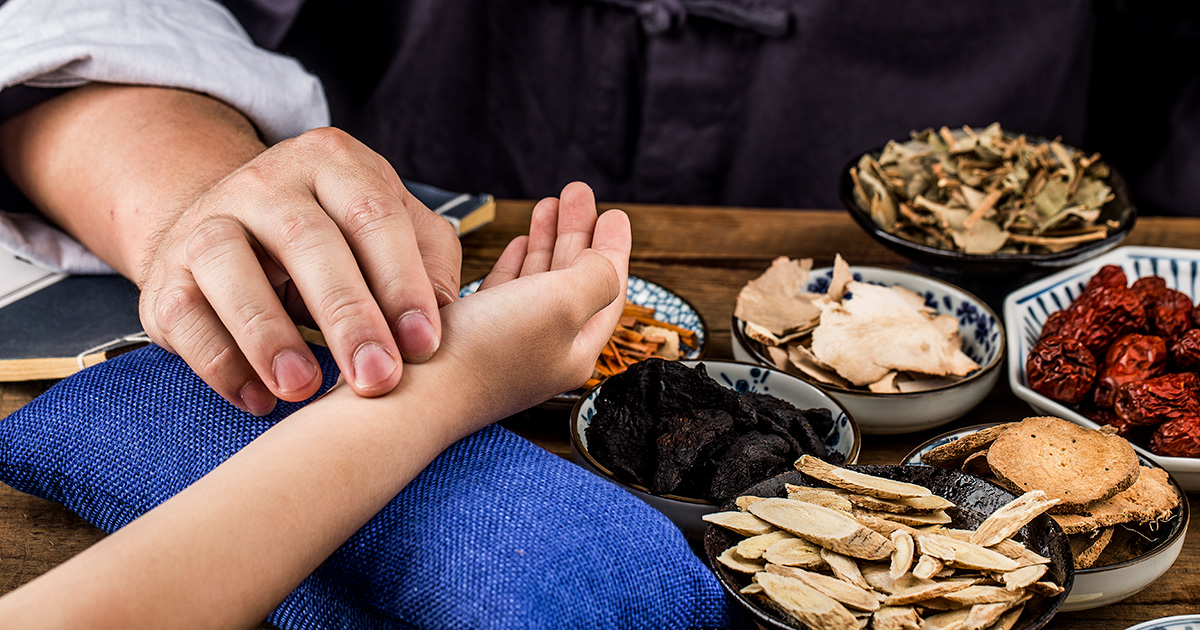Are you tired of dealing with chronic inflammation that just won’t seem to go away? If so, you’re not alone. Inflammation is a common issue that many people face, and it can have long-term effects on our overall health and well-being. But fear not! There is hope for reducing inflammation and promoting regeneration in your body. In this blog post, we’ll explore a targeted healing protocol designed to address chronic inflammation at its core. Whether you’re dealing with joint pain, digestive issues, or skin problems, this protocol may just be the key to finding relief and restoring balance in your body. So let’s dive in and discover how we can heal from within!
The Importance of Addressing Chronic Inflammation
Chronic inflammation is more than just a temporary annoyance – it can have serious implications for our health. When left unchecked, chronic inflammation has been linked to various diseases such as heart disease, diabetes, and even certain types of cancer. It’s not something to be taken lightly.
Addressing chronic inflammation is crucial because it helps us prevent these long-term health complications. By reducing inflammation in the body, we can alleviate symptoms such as pain and discomfort while also promoting overall healing and regeneration.
Moreover, chronic inflammation affects every aspect of our lives. It impacts our energy levels, mood stability, digestion, and quality of sleep. Imagine waking up feeling refreshed instead of groggy or being able to enjoy a meal without worrying about digestive issues flaring up! Addressing chronic inflammation paves the way for improved well-being across all areas of life.
But here’s the thing: simply covering up the symptoms with over-the-counter medications won’t cut it in the long run. We need to get to the root cause – understanding why our bodies are inflamed in the first place – if we want lasting relief and true healing.
That’s where this targeted healing protocol comes into play. Rather than masking symptoms temporarily, it focuses on identifying triggers that contribute to chronic inflammation and implementing strategies to address them head-on. By taking a proactive approach towards healing from within, we can experience reduced inflammation and promote regeneration for long-lasting results.
So let’s roll up our sleeves and explore each step of this healing protocol together!
Understanding the Healing Protocol
Understanding the Healing Protocol
In order to effectively reduce long-term inflammation and promote regeneration, it is crucial to have a clear understanding of the healing protocol. This protocol involves a holistic approach that addresses various aspects of health and well-being.
The first step in the healing protocol is identifying and eliminating food triggers. Many individuals may unknowingly consume foods that can trigger inflammation in their bodies. By identifying these triggers and removing them from your diet, you can significantly reduce inflammation levels and support your body’s natural healing processes.
Next, incorporating anti-inflammatory foods into your diet plays a crucial role in reducing chronic inflammation. Foods such as fruits, vegetables, fatty fish, nuts, seeds, and spices like turmeric are rich in antioxidants and have powerful anti-inflammatory properties. These foods provide essential nutrients that support the body’s immune system and aid in tissue repair.
Supplements also play an important role in promoting healing and regeneration. Certain supplements like omega-3 fatty acids, curcumin (a compound found in turmeric), probiotics, vitamin D3, and collagen peptides have been shown to have anti-inflammatory effects on the body.
In addition to addressing dietary factors, implementing stress-reducing techniques is vital for overall healing. Chronic stress can lead to increased inflammation levels within the body. Incorporating practices such as meditation or mindfulness exercises can help reduce stress levels and promote relaxation.
Understanding this comprehensive approach to healing is essential for successfully reducing long-term inflammation and supporting regeneration within the body.
Step 1: Identifying and Eliminating Food Triggers
Step 1: Identifying and Eliminating Food Triggers
When it comes to reducing long-term inflammation and promoting regeneration, identifying and eliminating food triggers is a crucial step in the healing protocol. Many individuals may be unknowingly consuming foods that are exacerbating their inflammation levels, hindering the body’s natural healing processes.
To begin this step, one must first take stock of their current diet and pay close attention to how certain foods make them feel. This process involves keeping a detailed food journal where you can record what you eat and any symptoms or reactions that occur afterwards.
After a period of observation, patterns may start to emerge, indicating potential food triggers. Common culprits include gluten, dairy products, processed sugars, alcohol, and artificial additives. However, it’s important not to jump to conclusions based on generalizations alone. Each person is unique in how they respond to different foods.
Once potential triggers have been identified through careful self-analysis or with the help of a healthcare professional or nutritionist specializing in inflammatory conditions, it’s time for the next crucial step—elimination.
Eliminating these trigger foods from your diet may seem daunting at first but can yield significant results in reducing inflammation levels over time. It requires discipline and commitment as even small instances of ingesting trigger foods can set back progress.
During this elimination period which typically lasts several weeks or longer depending on individual responses – focus on consuming wholefoods such as fruits, vegetables lean proteins nuts seeds healthy fats while avoiding packaged processed options better support healing regeneration within body
While eliminating trigger foods is an essential part of addressing chronic inflammation there no one-size-fits-all approach when it comes dietary changes Everyone responds differently some people find relief by removing specific food groups others might benefit more from adopting an anti-inflammatory diet overall
By taking charge of your diet through identifying eliminating potential allergens intolerances sensitivities causing constant low-grade systemic inflammation you’ll be empowering yourself towards better health and well-being
Step 2: Incorporating Anti-Inflammatory Foods
Incorporating Anti-Inflammatory Foods
When it comes to reducing long-term inflammation and promoting regeneration, incorporating anti-inflammatory foods into your diet is a crucial step. These foods can help combat the underlying causes of chronic inflammation and provide essential nutrients for healing.
One powerful group of anti-inflammatory foods is fruits and vegetables. They are rich in antioxidants, vitamins, and minerals that support the body’s natural healing processes. Colorful options like berries, leafy greens, and cruciferous vegetables are particularly beneficial.
Omega-3 fatty acids found in fatty fish such as salmon, sardines, and mackerel have potent anti-inflammatory properties. Including these fish in your meals twice a week can contribute to reduced inflammation levels.
Herbs and spices like turmeric, ginger, garlic, and cinnamon also possess anti-inflammatory effects. Incorporating them into your cooking or enjoying them as teas can add both flavor and therapeutic benefits.
Whole grains such as quinoa, brown rice, and oats contain fiber that helps regulate the immune system response by reducing inflammation markers in the body.
Healthy fats like avocados, olive oil, nuts (such as almonds), seeds (such as flaxseeds), play a vital role in fighting chronic inflammation due to their high content of monounsaturated fats or omega-3s.
By incorporating these diverse types of anti-inflammatory foods into your diet on a regular basis – along with eliminating potential food triggers – you’ll be providing your body with the necessary tools for reducing long-term inflammation while promoting tissue repair and regeneration naturally.
Step 3: Adding Supplements for Healing and Regeneration
When it comes to reducing long-term inflammation and promoting regeneration, adding supplements to your healing protocol can be a game-changer. These powerful allies can provide the extra support your body needs to heal and regenerate on a cellular level.
One key supplement to consider is Omega-3 fatty acids, which have been shown to reduce inflammation in the body. You can find Omega-3s in fish oil or plant-based sources like flaxseed or chia seeds. Another option is turmeric, a spice known for its anti-inflammatory properties. Curcumin, the active compound in turmeric, has been shown to help reduce chronic inflammation.
Probiotics are also worth adding to your regimen as they promote a healthy gut microbiome, which plays a crucial role in overall health and reducing inflammation. Look for strains like Lactobacillus acidophilus or Bifidobacterium lactis.
In addition, collagen peptides can aid in tissue repair and joint health. Collagen is an essential protein that supports skin elasticity and helps with cartilage formation.
Don’t forget about vitamin D! This sunshine vitamin not only boosts immune function but also has anti-inflammatory effects on the body.
Always consult with a healthcare professional before starting any new supplements as they can guide you towards the right dosage and ensure there are no interactions with other medications you may be taking.
By incorporating these targeted supplements into your healing protocol, you give yourself an extra boost towards reducing inflammation and promoting regeneration from within.
Step 4: Implementing Stress-Reducing Techniques
When it comes to reducing inflammation and promoting healing, addressing stress is a crucial step that often gets overlooked. Stress can wreak havoc on our bodies, leading to increased inflammation and hindering the healing process. That’s why implementing stress-reducing techniques is an essential part of any targeted healing protocol.
One effective technique for reducing stress is practicing mindfulness meditation. Taking just a few minutes each day to focus on your breath and bring your attention to the present moment can have profound effects on both your physical and mental well-being. It helps reduce cortisol levels, lowers blood pressure, and promotes relaxation.
Another powerful stress-reducing technique is engaging in regular exercise. Physical activity releases endorphins, which are natural mood boosters that help combat the negative effects of stress. Whether it’s going for a walk, hitting the gym, or practicing yoga, finding an exercise routine that works for you can significantly reduce chronic inflammation.
In addition to mindfulness meditation and exercise, incorporating relaxation techniques such as deep breathing exercises or progressive muscle relaxation can also help alleviate stress. These techniques activate the body’s relaxation response and promote feelings of calmness and tranquility.
Don’t underestimate the power of self-care activities in managing stress levels. Engaging in hobbies you enjoy, spending time outdoors in nature, connecting with loved ones or pets – these simple yet fulfilling activities can provide immense benefits for reducing long-term inflammation.
By implementing these stress-reducing techniques into your daily routine alongside other steps in the healing protocol discussed earlier (identifying food triggers; incorporating anti-inflammatory foods; adding supplements), you’ll be well on your way towards reducing chronic inflammation and promoting regeneration naturally!
Case Studies of Successful Healing Protocols
Case Studies of Successful Healing Protocols
Let’s take a closer look at some real-life case studies that demonstrate the effectiveness of targeted healing protocols in reducing long-term inflammation and promoting regeneration. These success stories highlight the power of addressing chronic inflammation through a comprehensive approach.
In one case, Sarah, a 45-year-old woman with rheumatoid arthritis, followed a healing protocol that involved identifying and eliminating food triggers. Through careful experimentation and monitoring, she discovered that gluten and dairy were major culprits behind her flare-ups. By removing these trigger foods from her diet, Sarah experienced significant reductions in joint pain and swelling.
Another inspiring example is Jason who suffered from chronic fatigue syndrome for years. He incorporated anti-inflammatory foods into his daily meals, such as leafy greens, fatty fish rich in omega-3s, and turmeric. Within weeks of making these dietary changes, Jason noticed an increase in energy levels and a decrease in overall fatigue.
Additionally, Lisa struggled with gut issues like bloating and indigestion for most of her adult life. She started taking supplements known for their healing properties such as probiotics to promote healthy gut flora balance; curcumin to reduce inflammation; and collagen peptides to support tissue repair. Over time, Lisa experienced improved digestion and fewer gastrointestinal discomforts.
Furthermore,
we have seen numerous cases where stress-reducing techniques played a vital role in promoting healing. For instance,
Julia,
a high-stress professional dealing with chronic back pain found relief by incorporating meditation into her daily routine along with regular exercise like yoga or swimming.
These individual success stories are just glimpses into the potential benefits of implementing targeted healing protocols aimed at reducing long-term inflammation while promoting regeneration.
By tailoring approaches to each person’s unique needs through food elimination,
anti-inflammatory nutrition,
supplement integration,
and stress reduction techniques we can create personalized plans for achieving optimal health outcomes!
Remember,
everyone’s journey towards better health is unique, and the key lies in finding what works best for you.
In
Conclusion
Conclusion:
Addressing chronic inflammation is crucial for promoting overall health and well-being. By implementing a targeted healing protocol, individuals can reduce long-term inflammation and promote regeneration within their bodies.
The first step in this protocol involves identifying and eliminating food triggers. This requires careful attention to one’s diet and being mindful of any adverse reactions or symptoms that may arise after consuming certain foods. By removing these triggers, individuals can effectively reduce inflammation at its source.
Incorporating anti-inflammatory foods is the next important step in the healing protocol. Consuming a diet rich in fruits, vegetables, whole grains, lean proteins, and healthy fats can provide the body with essential nutrients that support healing and decrease inflammation.
Supplements play a significant role in aiding the healing process as well. Specific supplements such as omega-3 fatty acids, turmeric, ginger, and probiotics have been shown to have potent anti-inflammatory properties that support tissue repair and promote regeneration.
Managing stress is another vital aspect of this protocol. Chronic stress can contribute to systemic inflammation and hinder the body’s ability to heal itself properly. Incorporating stress-reducing techniques such as mindfulness meditation, yoga, deep breathing exercises, or engaging in hobbies can help alleviate stress levels significantly.
To illustrate how effective this targeted healing protocol can be; let’s look at some case studies of individuals who successfully implemented it into their lives:
Case Study 1: Sarah suffered from severe joint pain due to chronic arthritis for many years. After following the targeted healing protocol for several months – eliminating trigger foods like gluten while incorporating anti-inflammatory foods like leafy greens – she noticed a significant reduction in her discomfort levels. With added supplementation of fish oil capsules containing omega-3 fatty acids along with regular yoga practice for stress reduction; Sarah experienced improved joint mobility over time.
Case Study 2: John had been dealing with digestive issues related to an underlying inflammatory condition called Crohn’s disease for years without finding relief. By following the healing protocol, John identified trigger foods like dairy and processed sugars




